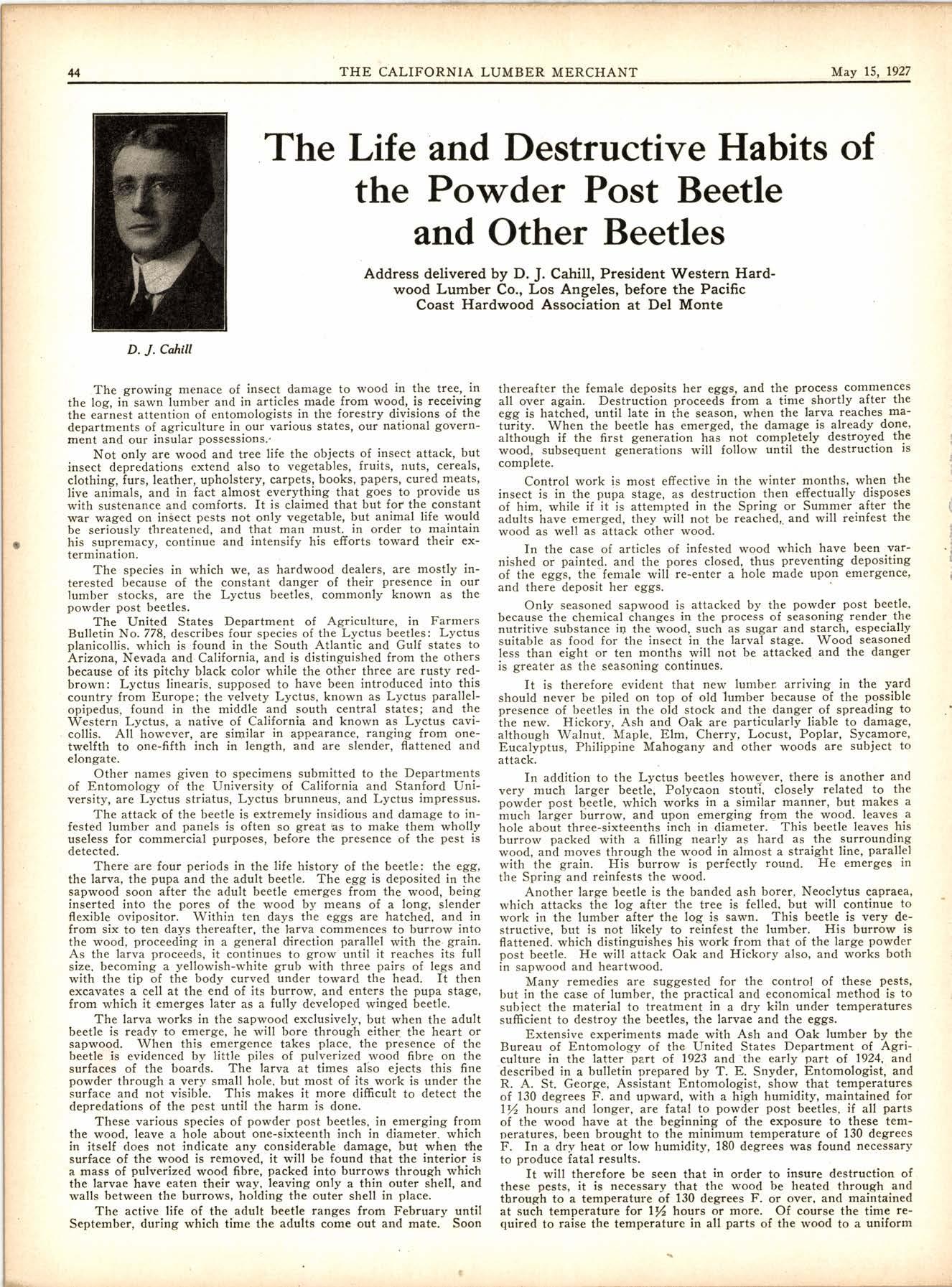
2 minute read
Ringside]lConvention Impressions
By ROY A. DAILEY Manager, North Coast District
Out of perhaps the most constructive Annual Convention ever held by the National-American Wholesale Lumber Association, the following 'high-lights' from a North'Coaster's viewpoint at least, seemed to stand out most prominently.
1. After several years of many and varied sorts of lumber distribution experiments, most of which had been cos-tly and ineffective, th-re is now a decided swing back to that time-tested and well charted channel-Manufacturers to Wholesaler to Retailer-or Retailer to Wholesaler to Manufacturer. Concrete evidence of this trend was devoted in the Convention by the frank statements (and following discussions) of sales executives fromfour large western lumber manufacturers as to their firms' reasons for deciding to distribute their output thru wholesalers. These stateirents might well be carefully considered by those mills who still coniinue to experiment with other distribution channels, resulting in actually putting their own stock in competition with itself in many cases.
Z.-The year 1926 proved that the manufacturer, wholesaler or retailer who can not adjust himself to meet the swiftly changing conditions in the industry-cannot co-operate wholehlartedly with the other branches and keep up with the parade without 'cutting s61ns15'-i5 rapidly passins out of the picture. With the 1926 figures all before us, itis difficult to detetmine just which branch of the industry fared the worst--or best. From the experiences related, however, it is plain to see that all branches would have bene- fitted greatly from closer cooperation with each other.
3. One reason why many wholesalers have not prospered in recent years is because they have given too much attention to securing a large VOLUME of business, and not enough attention to PROFITS. Members can be_nefit by giving careful consideration to the studies of the Cost Accounting Committee on the subject of what it costs to conduct a wholesale lumber business under present conditions. It is now pretty generally conceded that a large volume of business handled at little or no profit is not only poor business for the distributor but does great harm to the general lumber market.
4. A great deal of benefit is expected to result from the frank discussions at Atlantic City and New York between officials of the Pacific Lumber Inspection Bureau and Intercoastal Shippers in regard to methods and responsibility in connection-with the inspection and handling of Atlantic Coast shipments of West Coast lumber. It is to be sincerely hoped that with the much valuable evidelce placed befoie the P. L. I. B. ofificials showing the necessity of providing eastern buyers with some sort of protection agails_t contingencies which continually arise in connection with P. L. I. B. inspected intercoastal shipments, that proper steps will be ta-ken to insure the correctness a1{ integrity of iuch inspection certificates. Intercoastal Shippers are still of the opinion that proper results in this direction depend on the provision by the P. L. I. B. of adequate reinspection facilities on the Atlantic Coast the same as are provided in California markets.
Sands Easiersays A. H. Hamacher
"I have been in the f,oor arrfacing busiue$ for ceveral yean od frd that 'Everlastingt f,ooring can be canded much easier and guic&ec and leaves a better sudacer" he writec.
This is due to scientiGc kiln drying and a s:rsteo of ontin uous testing to .rllsure pedect matching, side and end.
Nichols & Cox Lunber Co., Grand Rapi&, Mich. Qata of fnc wd wt*ing










